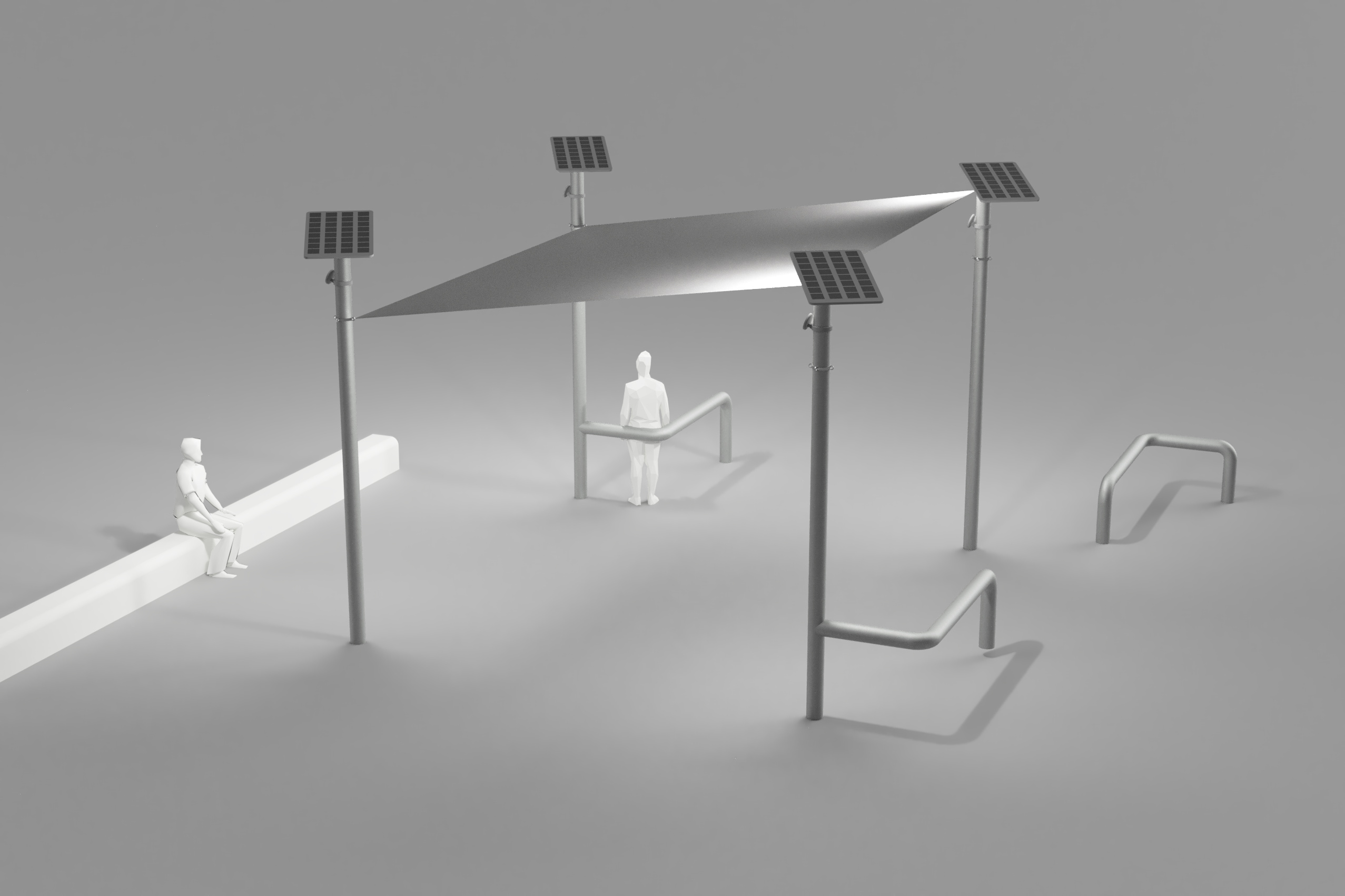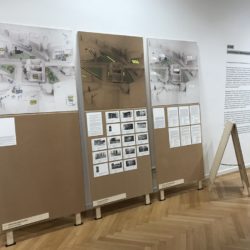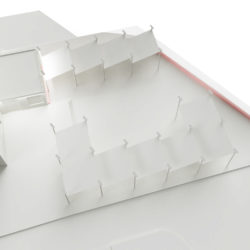Vorplatzgestaltung für einen Drogenkonsumraum
Description
Seating objects, light as well as protective structures against wind and weather for a highly frequented public square, which was built together with employees and visitors in a drug consumption room in the centre of Hamburg. The design is a call to action as well as an object-shaped proposal development for a social state action and the development of a discourse about influencing the production of space.What is the Topic?
Sitting, light and protection are archetypes of spatial design actions. Seating objects, light and roofs should primarily enable people to find basic needs for recreation, safety and health in public spaces. By designing basal seating, light and protection elements for a public place, however, the intention is also to refer to the systemic level of consciously omitting the design of the exterior space of a space mainly used by precarious and homeless people.
Why does it look like this?
Starting from a planning that was as biased as possible on the part of drug users, the first drafts emerged as gestures of recognition of their existence and their involvement in the development of the urban space. Further formal attributes were then developed in negotiation with political and social reality. Starting with Ideal, the idea was gradually removed until a realistic implementation could be realistically discussed. The seating objects are the result of a taring of vandalism security, offer to settle down and organizational conflicts if the objects could also serve as a lying surface. Steel tubes are stable, leave hardly any room for dirt and yet are much more than sitting directly on the floor. The curved shape also allows closed and open groups as well as a division of the space into usage zones. At the top, the lights are out of reach of the visitors* inside, are resistant to kicking out as LEDs and illuminate the square evenly. The sloped and divided roof elements try to proactively address concerns about the police's restriction of insight and yet protect as much of the area as possible from direct sunlight and rainy weather. The entire square design was developed and discussed together with DrobInn staff* and visitors* and is thus formally the result of a participatory negotiation process.
What is special?
The use of public space by drug users is a part of everyday urban life that can really be experienced. It is mainly discussed as a sub-area of social and health policy action spaces. The examination of the object-like level of drug consumption rooms and comparable care facilities is more often than not part of design. The specific requirements of classical fields of action of design such as seating, light and protection from the weather can be discussed in a special way in this constellation of actors. In addition, the interface work between drug consumption room, design and a museum is a special opportunity to develop, place and strengthen discourses and also to consider the common spaces of action of design disciplines in a special context.
What is new?
There is no other drug consumption area in Europe with such a presence of public green space. When drug consumption rooms are discussed, they are always discussed as closed systems and infrastructures that reduce individual and social harm. Developing a design that takes into account the internal structure of state-supported drug consumption rooms and the surrounding districts should therefore tend to be regarded as "new". The specific development of furniture for such a conflict-laden place and the location of the place near the centre also make the project unique.




